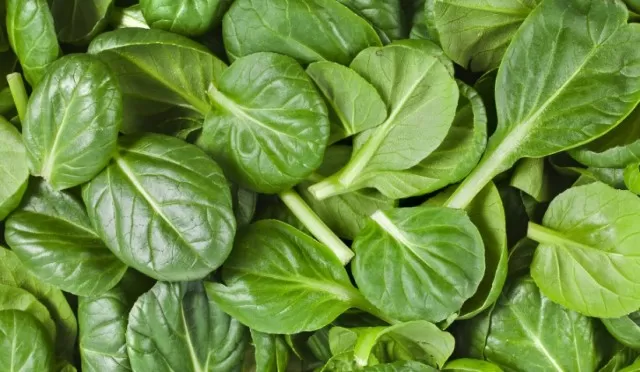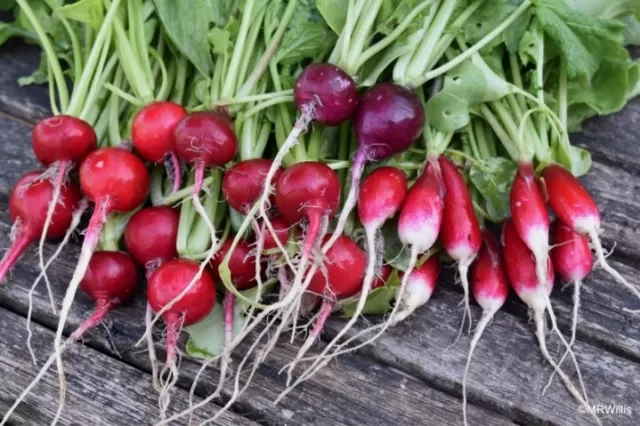Recommended Autumn Vegetables for Your Garden.To add a vibrant touch to your garden and prolong its growing season, consider planting cool-season vegetables. Many edible plants not only endure the cold but thrive in it, often more so than in high temperatures. Cold-tolerant vegetables can provide you with the opportunity to maintain your garden’s productivity throughout the fall and winter, and they are less susceptible to damage from harmful pests.
If you’re eager to keep your Vegetable Garden flourishing as temperatures drop, kickstart the process by introducing some of these fall vegetables into your garden. These recommendations come from gardening experts and can help you make the most of the cooler seasons while enhancing the beauty and productivity of your garden. Whether you’re an experienced gardener or just getting started, cool-season vegetables can be a rewarding addition to your garden, ensuring it remains lively and productive throughout the year.
Spinach: A Versatile Cool-Season Crop

Spinach (Spinacia oleracea) is a versatile cool-season vegetable that can be a delightful addition to your garden.
To ensure a successful spinach crop, it’s essential to follow the right planting timeline. Typically, spinach should be directly sowed in your garden six to eight weeks before the average first frost date in the fall.
The beauty of growing spinach lies in its relatively quick maturity.
After seeding, spinach is typically ready to be harvested within 37 to 45 days, making it a rewarding choice for gardeners looking for a rapid turnaround.
One of the advantages of growing spinach is its flexibility in harvesting.
You can choose to harvest it at the baby stage, when the leaves are tender and small, or you can wait until it reaches full size for a heartier yield.
Alex Correia, a senior horticulturist at Longwood Gardens, highlights the rapid growth of spinach, making it a convenient choice for gardeners looking for a bountiful cool-season crop.
Whether you’re a seasoned gardener or a beginner, adding spinach to your garden can be a rewarding experience, providing you with fresh and nutritious greens for your culinary creations.
Broccoli: A Cool-Season Delight
Broccoli (Brassica oleracea var.
italica) is a beloved cool-season vegetable that thrives in cooler temperatures and may struggle if grown during the heat of summer, according to Carrie Spoonemore, co-creator of Park Seed’s “From Seed to Spoon” app. This nutrient-rich and flavorful vegetable is a favorite in many gardens.
To cultivate a successful broccoli crop, it’s essential to align your planting with the right season.
You can either sow broccoli seeds directly or transplant seedlings into your garden when they have developed four true leaves, typically around eight weeks from germination.
The timing of the harvest varies depending on the broccoli variety you’re growing, but as a general guideline, broccoli usually reaches maturity in about 55 to 75 days.
Broccoli’s preference for cooler temperatures makes it an ideal choice for gardeners who want to enjoy fresh, homegrown produce during the cooler months.
Whether you’re a seasoned gardener or new to the world of growing your own vegetables, incorporating broccoli into your garden can be a rewarding endeavor, offering both nutritional benefits and a delectable addition to your meals.
Cabbage: An Easy and Cold-Hardy Fall Crop

Cabbage (Brassica oleracea var.
capitata) is a top choice for fall vegetable gardening due to its ease of cultivation and exceptional cold tolerance. This cool-season vegetable is not only easy to grow but also rich in nutrients, making it a valuable addition to your garden.
The time it takes for cabbage to reach maturity can vary depending on the variety you choose to cultivate.
Some cabbage varieties are ready to be harvested in as little as 60 days, while others may require more than 120 days to mature fully. Therefore, when selecting a cabbage variety, it’s essential to consider your desired harvest timing and local climate conditions.
For gardeners in search of a particularly hardy cabbage variety, Red Express Purple/Red Cabbage is a notable choice.
This variety is renowned for its resilience and Durability in cool-season conditions. It not only thrives in cold temperatures but can also withstand light frost and temperatures as low as 28 degrees Fahrenheit, as explained by Carrie Spoonemore, co-creator of Park Seed’s “From Seed to Spoon” app.
Cabbage is a versatile vegetable that can be incorporated into a wide range of culinary dishes, from coleslaw to sautéed greens.
Its hardiness and adaptability make it an excellent addition to your fall garden, providing a source of fresh and nutritious produce even as the temperatures drop. Whether you’re an experienced gardener or just starting, growing cabbage is a rewarding endeavor.
Parsnips: Cool Season Delights
Parsnips (Pastinaca sativa) are a delightful addition to your cool-season garden, renowned for their unique flavor, which is enhanced when the plants experience several weeks of cool, frosty weather.
The key to growing flavorful parsnips is timing.
These cool season vegetables can be harvested once their roots have reached full size, typically occurring around 100 to 120 days after sowing the seeds. This extended growth period allows the parsnips to develop their distinctive and sweet taste.
Parsnips are versatile in the kitchen and can be used in a variety of culinary creations, from hearty soups and stews to roasted side dishes.
The longer they remain in the ground and experience cool temperatures, the more their flavor is enhanced, making them a delightful addition to your fall and winter meals.
If you’re a gardener looking to diversify your cool-season crop selection, consider adding parsnips to your garden.
Their unique flavor and adaptability to colder temperatures make them an excellent choice for those seeking to enjoy fresh, homegrown produce even as the weather turns chilly.
Radishes: Quick and Versatile Fall Crops

If you’re looking to enjoy rapid results from your fall garden, radishes (Raphanus sativus) are an excellent choice.
These fast-growing vegetables mature in as little as 20 to 30 days, making them a satisfying addition to your garden.
To ensure a continuous supply of radishes, consider planting their seeds in succession, as suggested by Alex Correia.
This approach allows you to enjoy a steady harvest of these crisp, peppery delights throughout the fall season.
Planting radishes in the fall is particularly advantageous because high temperatures can induce bolting in these plants.
Bolting occurs when an edible plant prematurely goes to seed, rendering it less palatable. By choosing to grow radishes in cooler fall conditions, you can avoid this undesirable outcome and savor their fresh and vibrant flavor.
Radishes are a versatile ingredient in the kitchen, adding a zesty crunch to salads, sandwiches, and various other dishes.
Their quick growth and adaptability to the fall season make them a valuable addition to your garden, ensuring a speedy and satisfying harvest. Whether you’re an experienced gardener or a novice, growing radishes can be a rewarding and delicious endeavor.
*The information is for reference only.